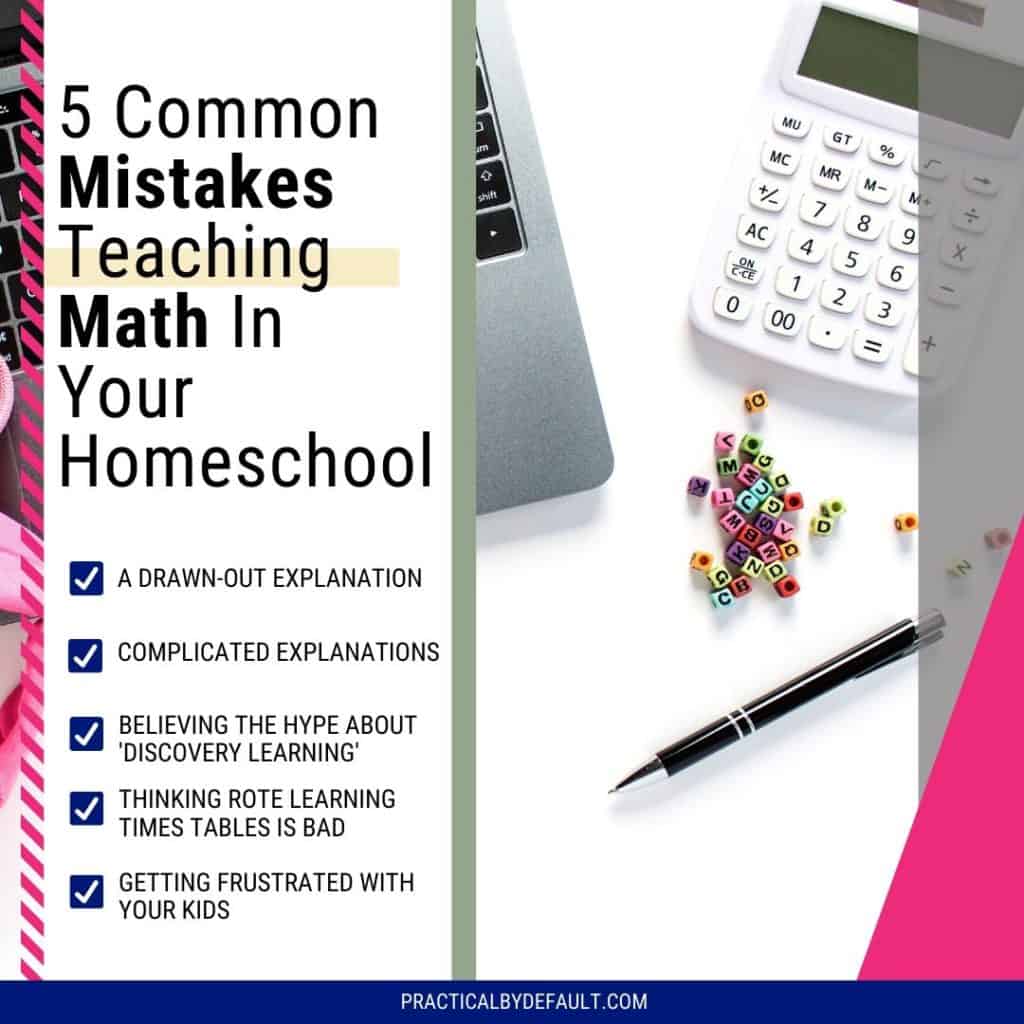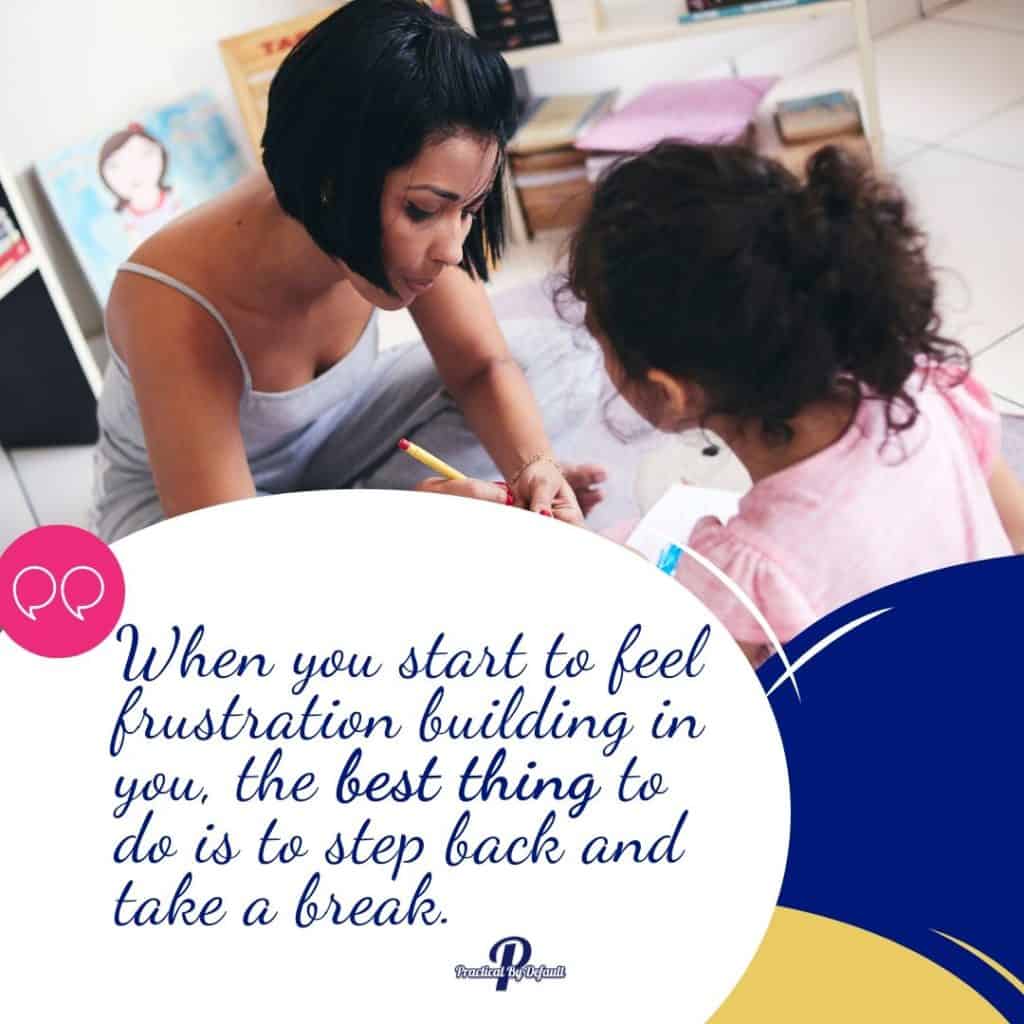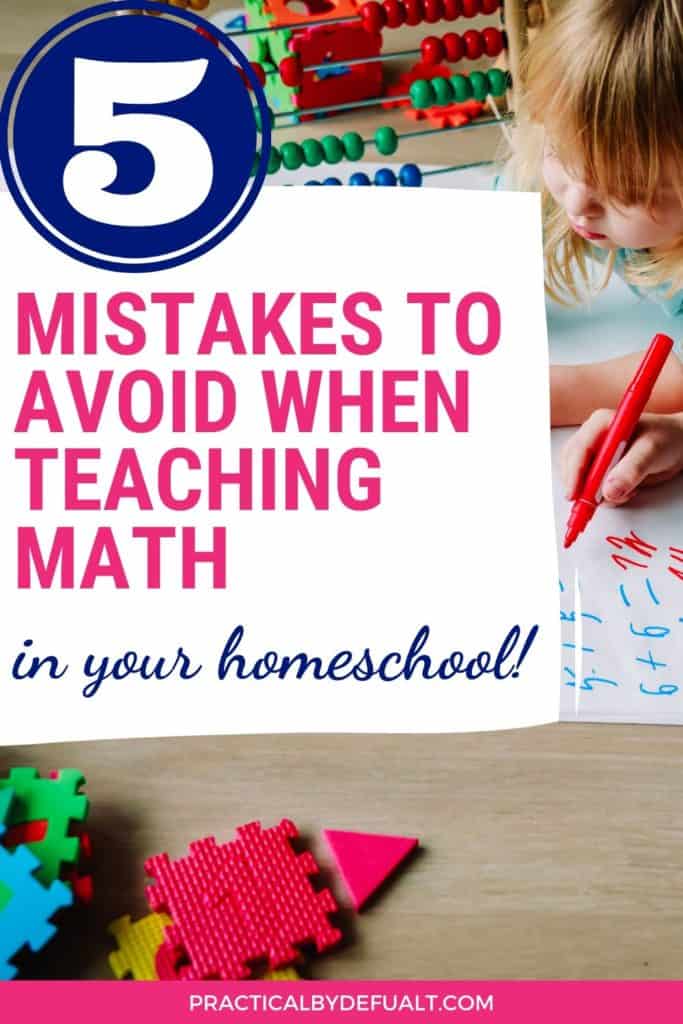Are You Making These Math Mistakes Teaching Math? 5 Things To Stop Doing Now
Do you have a child that is always frustrated with math? It seems no matter what you do, that child will drag their feet when it comes time to do a Math lesson.
When this happens, our gut reaction is to look at the math program we are using and start brainstorming all the things that might be wrong.
Is it too hard? Too easy? Boring? Distracting? Is it me?
Hold up, what?
That’s right. Maybe it’s you, the homeschool teacher. Maybe YOU are making these math mistakes.

Disclosure: I may receive commissions for purchases made through links in this post.
What You Can Learn From Mistakes
As a working mom who is also homeschooling, I’ve made my share of mistakes. From the very beginning of our journey, to teaching my kids to cook, to learning to work full time while homeschooling, I’ve made mistakes. While mistakes are one of the best ways to learn, sometimes we need a little help pinpointing where we are going wrong so we can fix it.
A few months ago, I had an excellent interview with Nadim from CTCMath. One of the I asked was, “what are some of the common mistakes we as parents make when teaching our kids math?”
It turns out there are five common math mistakes many make when it comes to teaching math in their homeschool.
Before you start dissecting your homeschool curriculum, find out if you’re making any of the mistakes below, think about getting rid of them FIRST. Then you and your kids have a much better chance of succeeding.
5 Common Mistakes You Are Making When Teaching Math In Your Homeschool
If you find your child is always dreading their math lessons, developing deep anxiety, or struggling with low self-esteem, it is good to find out if you are causing the damage.
I wanted to share my notes based on our conversation. If you prefer to watch, Nadim shared five math mistakes you want to avoid. You can watch the video here.
Our discussion about mistakes starts at 5:52.
Math Mistake #1: A Drawn-out Explanation
We can get sucked into thinking “more is better,” but the reverse is true. You want to keep your explanation short and to the point.
Nadim suggests around 3-4 minutes for younger kids and 5-8 minutes for older kids, focusing on one concept at a time. Next, you will want them to practice what they just learned immediately.
It is better to keep the instruction short and concise and use the rest of the time practicing the new concept.
Math Mistake #2: Complicated Explanations
Math can be technical, but the key is to keep it simple.
Try to stick to one method of teaching. While there are multiple ways of approaching a math problem, math is much easier to teach when you know which methods kids understand best, and know which methods you must avoid.
Whatever you do, don’t complicate things.

Math Mistake #3: Believing The Hype About ‘Discovery Learning’
According to Learning Theories, “Discovery Learning is a method of inquiry-based instruction, discovery learning believes that it is best for learners to discover facts and relationships for themselves.”
I had Nadim explain it in his own words at 10:31 in the video shown above.
According to Nadim, while discovering learning has its place, it is best used after the child has a solid foundation.
He uses the example of giving a child a Rubix cube, and after about 15 minutes, most children will be left frustrated. They would put it down and never pick it up again.
However, if you give the child a simple explanation and small algorithms, they will have the tools needed. They will start to understand, things will click in place, and discovery learning will take place after. (9:13 in the video)
Don’t throw kids in the deep end; they need concrete, short, concise, and clear explanations for math. Give them a foundation to build on.
Math Mistake #4: Thinking Rote Learning Times Tables Is Bad
Do you make your children do things they don’t want to do? Sure, you do. As adults, we do things we don’t want to do, like changing diapers at 3 AM in the morning, but it must be done.
Rote learning your timetables is one of those sometimes tedious but vital tasks our kids need if they are going to instantly recall math facts.
As a child, I could not recall 6 X 6 = 36 for the life of me. So my teacher made me repeat it during lunch hour. I have forgotten many of my timetables since then, but that one has stuck!
5 Ways To Make Rote Learning Math Facts Fun
Convincing your kids to learn their math facts by rote can be challenging because it is so boring.
I asked experienced homeschool moms what they were using to make it fun.
Here are five math tools they recommend:
- XtraMath
- Rapid Recall
- SplashLearn
- Pet Bingo by Duck Duck Moose
- How To: Amazing Basketball Math Game for 2nd Grade
As you can see, homeschool moms are getting creative and thinking outside the box! Don’t forget you can also use games to add fun while learning math facts.
Math Mistake #5: Getting Frustrated With Your Kids
How many times have you found yourself getting frustrated with your child during homeschool? It can be frustrating when kids don’t get math the first time around, the second time, or the third…
Math in our household is a hot topic. I’ve got one child who struggles with math, and somedays the frustration and tears were not only on her side.
However, I am getting better at controlling my frustration than I ever used to be.
You will see the wall come up if you get frustrated with your child during your math lesson. Frustration becomes this roadblock for the child, they zone out, and you lose your focus when you are teaching.
Because if they do, then in the future they will hesitate to come to you with problems because they’re worried about how you’ll react.
Not just math problems, but about things much more important than math.

What To Do When Math Frustrations Start To Show
When you start to feel frustration building in you, the best thing to do is to step back and take a break.
In our house, we stop and do some cooking or baking. We pull out the art supplies and focus on having fun and reconnecting.
The best thing about homeschooling is the freedom to step back and take a break when necessary. Don’t be afraid to change things up and try new things to reduce the frustration and stress of math.
How CTCMath Has Helped Me Overcome These Common Math Mistakes
Looking back over these five mistakes, I am pretty sure I’ve made all of them at least once.
I will admit that finding the right math program was a big step to ditching the stress of long, drawn-out explanations, teaching too many methods in one lesson, and reducing math frustration.
If you don’t know much about CTCMath and how it can help, here’s a quick overview of what you can expect:
- Video tutorials and summaries are clear, complete, and easy to follow.
- Worksheets and interactive questions based on the video tutorials that your child has just watched.
- Weekly Revision Sets are a great tool to consolidate learning and help to identify any specific learning gaps.
- Extensive reports are valuable in monitoring your child’s progress.
And there is plenty of support and how-to videos to help you get going as painlessly as humanly possible.
To learn if CTCMath is right for your family, I encourage you to try out the free trial or read CTCMath: Is This Online Math Curriculum Right For Your Homeschool?
Now that you are aware of these common math mistakes, it’s important to reflect on ways to avoid them.
Take care,
Jen
PS. If you have a teen that hates math, read how we are overcoming that challenge here: CTCMath: The Homeschool Math Program For Teens That Hate Math.
📌Don’t let this post get lost in the internet abyss – pin it to your Pinterest board now!


Hi, I’m Jen. I help working moms juggle their career and homeschool their kids by providing support, systems and tools. You are warmly invited to Join the Online Community Here!







